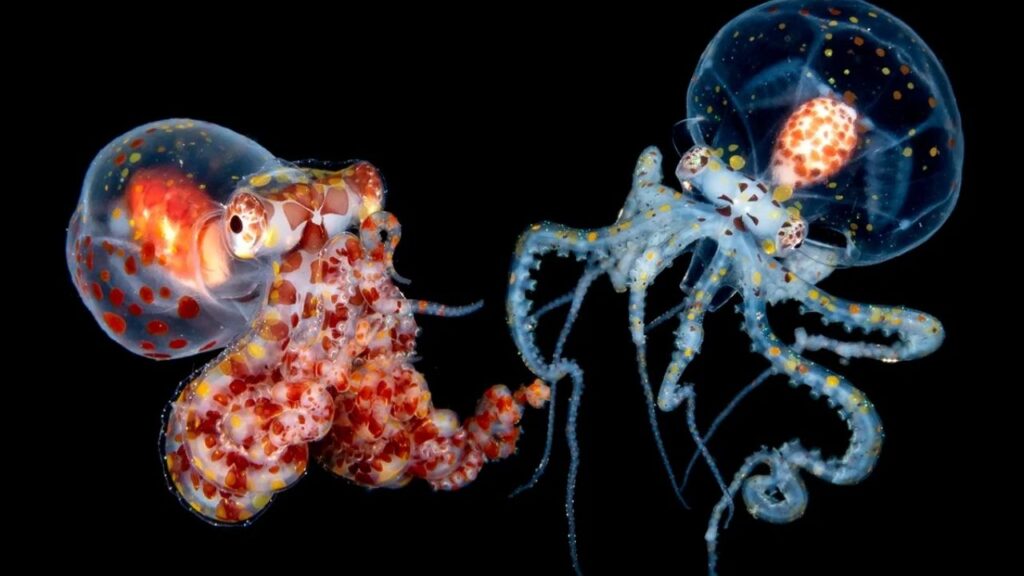
The deep sea is one of the most mysterious and least explored places on Earth. Home to fascinating creatures that glow in the dark, this underwater world is full of bioluminescent organisms that use their light for communication, hunting, and defense. These creatures thrive in some of the harshest environments, from total darkness to extreme pressure. Scientists estimate that over 90% of deep-sea creatures exhibit some form of bioluminescence.
Discover 8 Glowing Deep-Sea Creatures
| Feature | Details |
|---|---|
| Bioluminescence | Light emission by deep-sea creatures via chemical reactions. |
| Depths | Most glowing creatures live at depths beyond 200 meters, where sunlight cannot reach. |
| Function | Used for attracting prey, escaping predators, or communication. |
| Habitat | Found in deep oceans worldwide, from the Mariana Trench to Arctic waters. |
| Notable Species | Anglerfish, Atolla jellyfish, Comb jellies, Gulper eel, Vampire squid, Tomopteris, Deep-sea shrimp, Clusterwink snail. |
| Scientific Importance | Bioluminescent proteins used in medical research, biotechnology. |
| Official Resource | National Oceanic and Atmospheric Administration (NOAA) |
The deep sea remains one of the most intriguing and least explored parts of our planet. Bioluminescent creatures have evolved unique adaptations to survive in total darkness, using light to hunt, escape, and communicate. Scientists continue to study these glowing organisms for medical research and environmental monitoring. Whether you’re a curious student, marine biologist, or just a nature lover, exploring the world of bioluminescent deep-sea creatures is a journey into the unknown!
What is Bioluminescence?
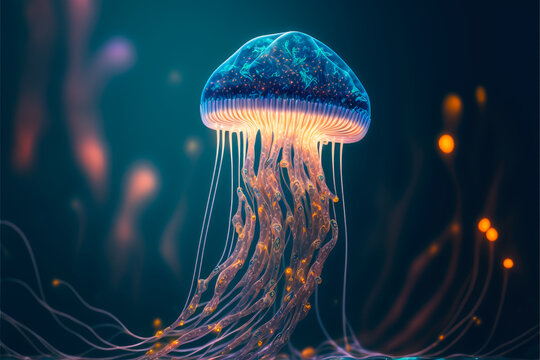
Bioluminescence is the ability of living organisms to produce light through a chemical reaction. This phenomenon occurs when a light-emitting molecule called luciferin reacts with oxygen in the presence of an enzyme called luciferase. The result is a glow that helps these creatures survive and adapt to their deep-sea environments.
Why Do Deep-Sea Creatures Glow?
- Attracting Prey – The anglerfish uses a glowing lure to attract smaller fish into its sharp-toothed mouth.
- Defense Mechanism – The Atolla jellyfish produces a bright flash to distract predators.
- Communication – Certain deep-sea species use light signals to recognize their own kind.
- Camouflage & Misdirection – Some fish match the dim light from above to blend in.
- Mate Attraction – Some deep-sea creatures use bioluminescence to attract potential mates in the darkness.
8 Amazing Deep-Sea Creatures That Glow
1. Deep-Sea Anglerfish

- Depth: 1,000 – 3,280 feet (300 – 1,000 meters)
- Bioluminescence Purpose: Hunting
- Fun Fact: Only female anglerfish have the glowing lure; males are tiny and attach to females as parasites.
- More Info: National Geographic
2. Atolla Jellyfish

- Depth: 650 – 13,000 feet (200 – 4,000 meters)
- Bioluminescence Purpose: Defense
- Unique Ability: Flashes of red and blue light when attacked.
3. Comb Jelly
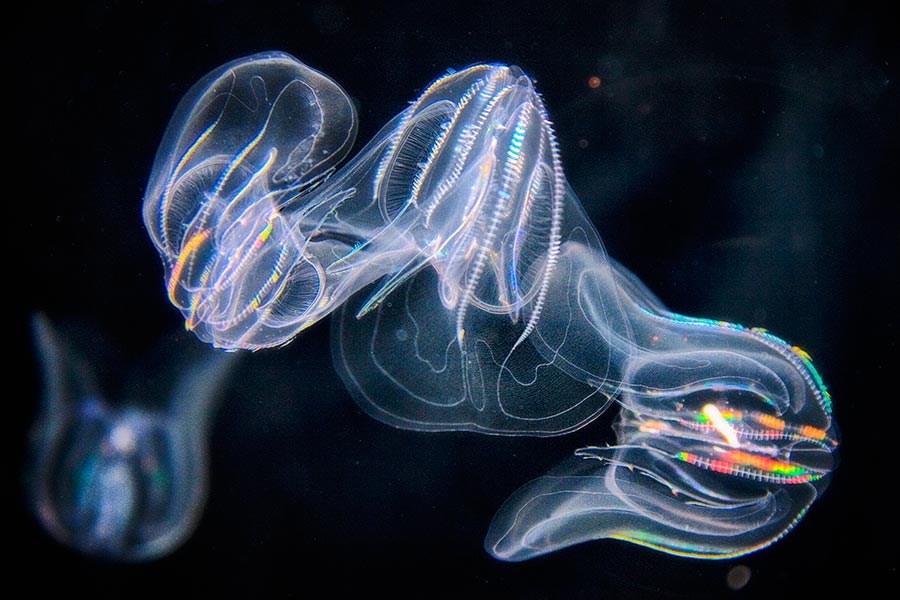
- Depth: 0 – 2,300 feet (0 – 700 meters)
- Bioluminescence Purpose: Defense & Communication
- Appearance: Produces rainbow-like flashes when moving.
4. Gulper Eel
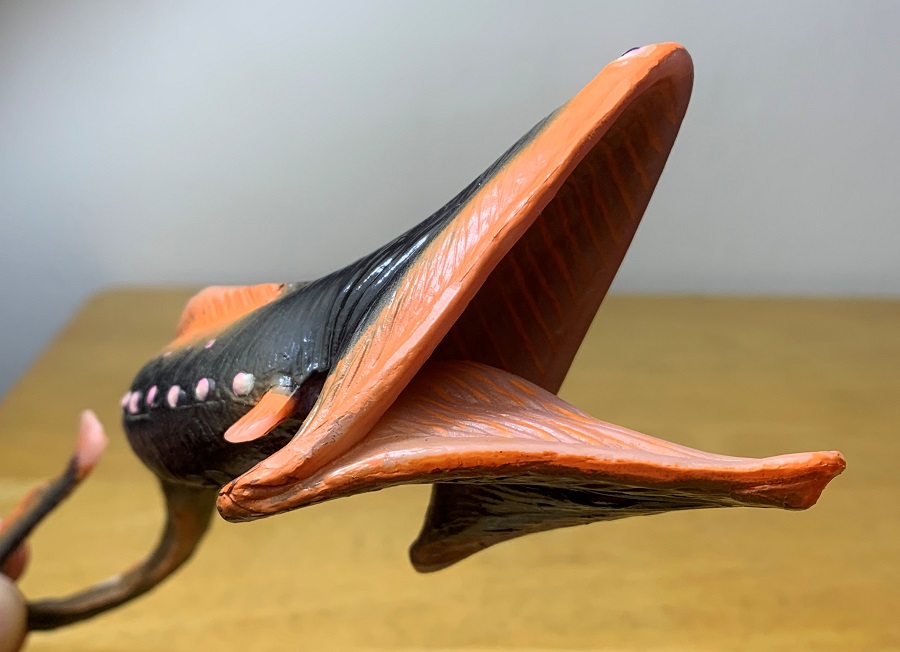
- Depth: 1,600 – 9,800 feet (500 – 3,000 meters)
- Bioluminescence Purpose: Attracting prey
- Special Feature: Expands its mouth to swallow large prey whole.
5. Vampire Squid

- Depth: 2,000 – 3,280 feet (600 – 1,000 meters)
- Bioluminescence Purpose: Produces glowing mucus to confuse predators.
- Interesting Fact: Despite its name, it feeds on marine snow (organic debris) rather than blood.
6. Tomopteris (Glowing Worm)
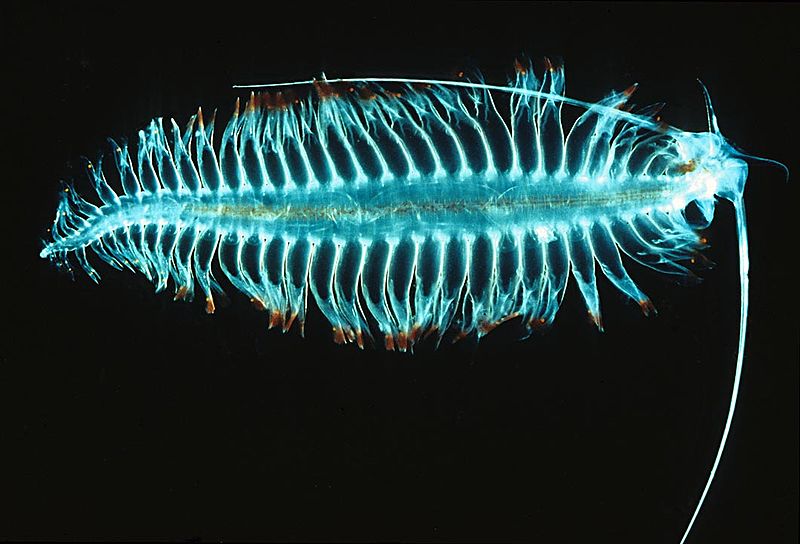
- Depth: 3,000 – 6,500 feet (900 – 2,000 meters)
- Bioluminescence Purpose: Defense
- Rare Trait: One of the few creatures that emit yellow light instead of blue or green.
7. Deep-Sea Shrimp

- Depth: 2,500+ feet (762+ meters)
- Bioluminescence Purpose: Ejects a glowing blue cloud when threatened to escape predators.
8. Clusterwink Snail
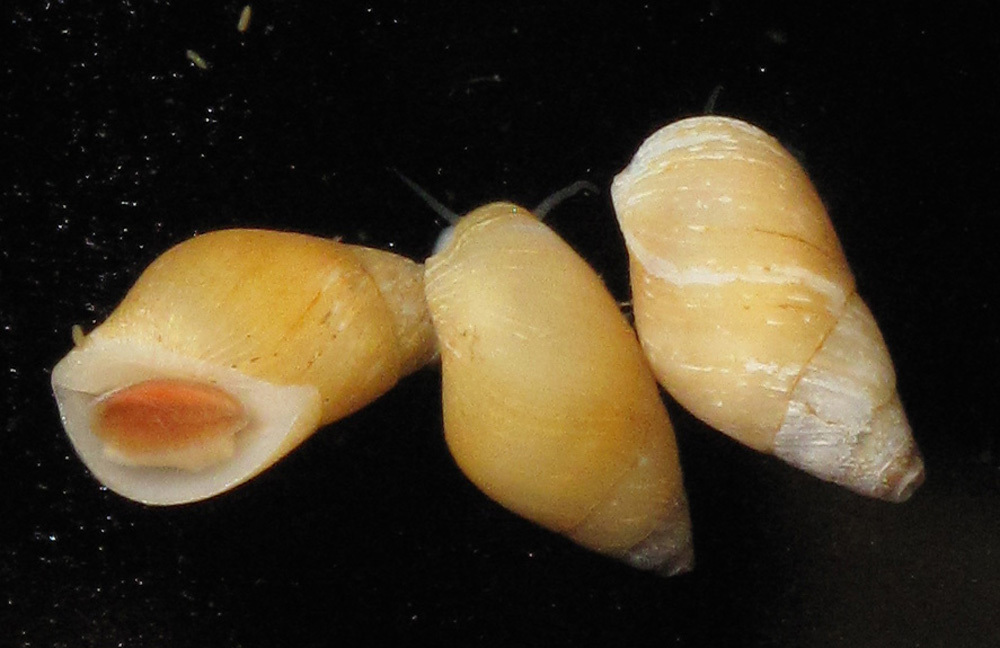
- Depth: Shallow coastal waters
- Bioluminescence Purpose: Deterring predators
- Unique Glow: Emits greenish-blue flashes, visible even to humans.
How Scientists Use Bioluminescence in Research
Bioluminescence isn’t just a fascinating survival tool for deep-sea creatures—it has practical applications in science and medicine:
- Medical Imaging: Scientists use bioluminescent proteins to track diseases, including cancer.
- Environmental Monitoring: Bioluminescent bacteria help detect pollutants in water.
- Genetic Engineering: Glow-in-the-dark proteins are used in DNA research and drug development.
Frequently Asked Questions (FAQs)
Q1: Why do deep-sea creatures’ glow?
A: They use bioluminescence for survival—hunting, communication, and escaping predators.
Q2: What is the deepest-living bioluminescent creature?
A: The snailfish found in the Mariana Trench (over 26,000 feet deep) exhibits faint bioluminescence.
Q3: Can humans see bioluminescent creatures?
A: Yes! Some, like the Clusterwink snail and certain jellyfish, emit light visible to the human eye.
Q4: Are bioluminescent creatures dangerous?
A: Most are harmless, but some, like the anglerfish, are fierce predators.
Q5: Can I see bioluminescent organisms in real life?
A: Yes! Visit places like Mosquito Bay, Puerto Rico or Toyama Bay, Japan to witness natural bioluminescence.










